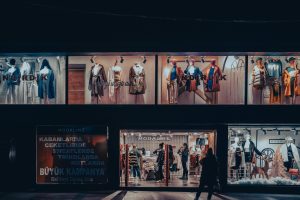How the internet has completely democratized the fashion world
The fashion world has long been seen as an exclusive and elite community, with its own set of rules and gatekeepers. However, with the advent of the internet, barriers to entry in the fashion industry have been torn down and a new era of democratization has emerged. From traditional fashion houses to up-and-coming indie designers, everyone now has an equal shot at making a name for themselves in the glamorous world of fashion. In this article, we will explore how the internet has completely revolutionized the fashion industry and opened up new opportunities for aspiring fashion insiders.
The Power of Social Media
Social media has been a game-changer for the fashion industry. Platforms like Instagram, Facebook, and Pinterest have not only allowed fashion brands to promote their products and reach a wider audience, but also given individuals the ability to express their own personal style and gain a following. Now, fashion influencers and bloggers are just as influential as fashion editors and celebrities, and brands are taking notice.
Influence without Connections
Before the internet, breaking into the fashion industry typically required knowing the right people in the right places. However, with the rise of social media, anyone with a strong personal style and a good eye for photography can gain a following and catch the attention of fashion brands. This has opened up the industry to a whole new pool of talent, allowing for more diversity and creativity in the fashion landscape.
The Rise of Online Shopping
The rise of e-commerce has completely changed the way we shop for fashion. With just a few clicks, we can now access a vast array of fashion items from all over the world, without having to leave our homes. This has not only made the shopping experience more convenient, but also leveled the playing field for both established brands and emerging designers. Online shopping has also allowed small, independent fashion labels to reach a global audience, giving them the opportunity to grow and thrive in a highly competitive market.
Spontaneous Trends
In the past, fashion trends were set by the top fashion designers, who would release their collections twice a year during fashion week. However, with the rise of social media and fast fashion, trends now emerge and spread at a much faster pace. The internet has allowed for a constant flow of inspiration and creativity, making it easier for individuals to stay on top of the latest trends and create their own unique looks.
User-Generated Content
With the proliferation of user-generated content, the traditional top-down approach of the fashion industry has been turned upside down. Instead of brands dictating the trends, consumers now have a say in what’s popular and what’s not. Social media platforms like Instagram and TikTok have become hubs for trendsetting, with users sharing their outfit ideas and styling tips, ultimately shaping the fashion landscape.
Direct Interaction with Consumers
The internet has also given fashion brands the opportunity to directly interact with their consumers. With the rise of social media and online customer service, brands can now receive feedback and engage with their audience in real-time. This has allowed for a more inclusive and transparent relationship between brands and consumers, and has given consumers a voice in the fashion industry.
The Future of Fashion
The democratization of the fashion industry through the internet is only the beginning. As technology continues to evolve, we can expect even more changes in the way fashion is produced, consumed, and marketed. With the rise of artificial intelligence, virtual and augmented reality, and sustainable fashion, the fashion world is becoming more accessible and inclusive than ever before.
Predictive Analytics
With the help of predictive analytics, brands can now gather data and insights from social media, consumer behavior, and purchase history to inform their decision-making. This not only allows brands to create products that cater to their consumers’ needs and preferences, but also enables them to better forecast trends and stay ahead of the curve.
Sustainable Fashion
The internet has also played a significant role in the rise of sustainable fashion. With the increasing awareness of environmental issues, consumers are now looking for fashion brands that align with their values and are eco-friendly. The internet has allowed for the easy access and dissemination of information about sustainable practices, encouraging brands to adopt more sustainable methods of production.
In conclusion, the internet has completely democratized the fashion world, making it more accessible, diverse, and fluid than ever before. From social media to e-commerce, technology has paved the way for a more inclusive and democratic fashion industry, giving power to the people and breaking down the exclusive barriers that once surrounded it.









